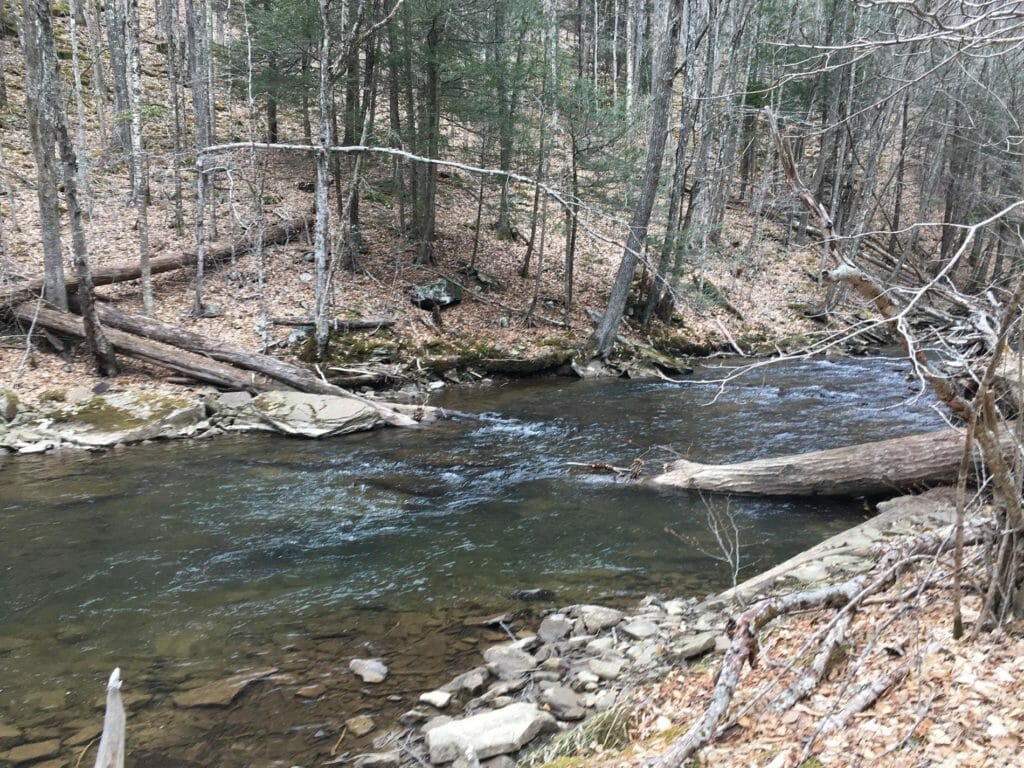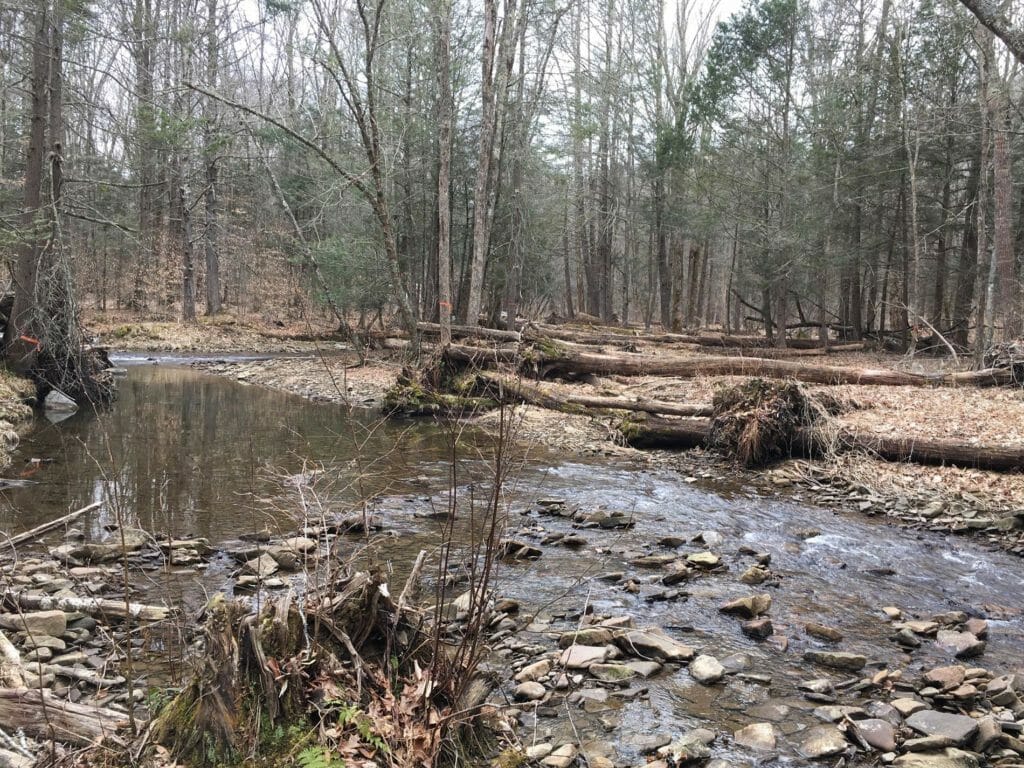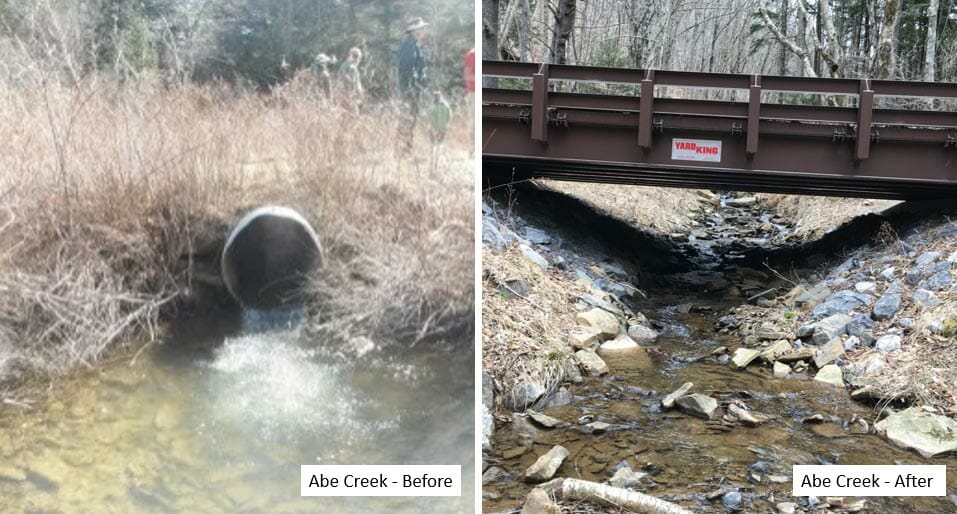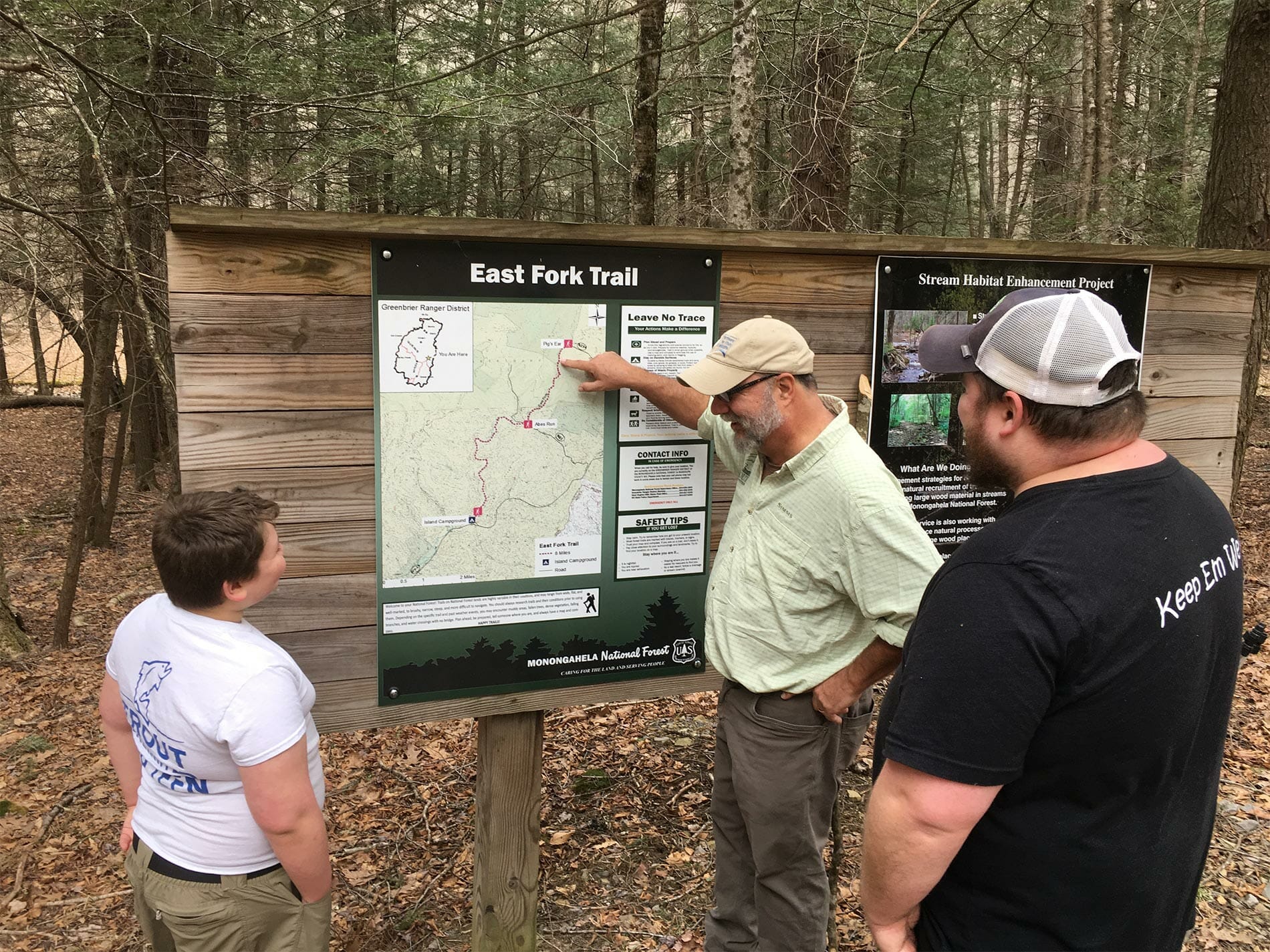“You just want to nudge it. Too often restoration work is over-engineered. The key is to simply nudge the system in the right direction, and then allow for natural processes to occur.” Gary leaned back and looked upstream. A smile crept up. “I had two anglers who told me they caught 80-90 brook trout here last week. That’s when you know you’ve done good.”
Gary Berti leads Trout Unlimited’s restoration work on the Greenbrier and the headwaters of the Potomac in West Virginia. On the Greenbrier alone, he and his crews have restored more than 100 miles rivers and streams. The Greenbrier flows through the Monongahela National Forest. In the face of a changing climate with the state buffeted by intense floods, the Forest Service identified restoration of the Greenbrier as vital to maintaining the river as a native brook trout stronghold.
An angler wouldn’t even notice the large trees clumped together on the bank. It just looks natural. But they would stop and fish the hole beneath the logjam. It is by design that many of the large wood installations are on eroding banks. The key is to “rough up the floodplain.” The more large wood in the floodplain the longer it will hold water. The more slowly it releases water, the longer the fish can enjoy late-season flows.

The large wood can also help to slow the energy of the stream during floods. This can help to protect downstream infrastructure such as bridges and roads. Gary recalls talking to a road engineer more familiar with channelizing and straightening rivers in response to floods. As he looked over the work “his face fell from pink to grey, and he said, ‘We have been doing this wrong for 100 years.’”

The story of the Greenbrier is the same on almost every forest in the eastern United States. Only about 450 acres of old growth forest remain in the entire state. At the turn of the century, the first places that loggers cut were the streamside areas as the land was flatter and the trees were larger. Roads were cut into the forest to allow for better access to the timber.
Chad Landress, the fish biologist for the Mon explains what happened next. “You take all the trees away, you take the soil stability away, and what happens–the stream starts to erode and cuts down into the channel. So, you end up with very incised channels.” In addition, old, unused forest roads bleed sediment into streams. And in the absence of trees shading the stream, water temperatures increase.
Working with our partners at the Forest Service and the Fish and Wildlife Service, we obliterated over 100 miles of unused roads, decreasing erosion on about 85,000 acres of forest. Old culverts were replaced with bridges, allowing native brook trout to migrate in response to drought and flooding.

Gary and I walked the stream with Nathan Justice, the president of the Sal-Font chapter, and his 10-year-old son, Kayden. Nathan, who founded Brookie Bum, and who is a huge advocate for native brook trout says, “there’s something about the water.” He turned and looked to Kayden, “we’re doing this for you, bud.”
Chris Wood is the president and CEO of Trout Unlimited.



